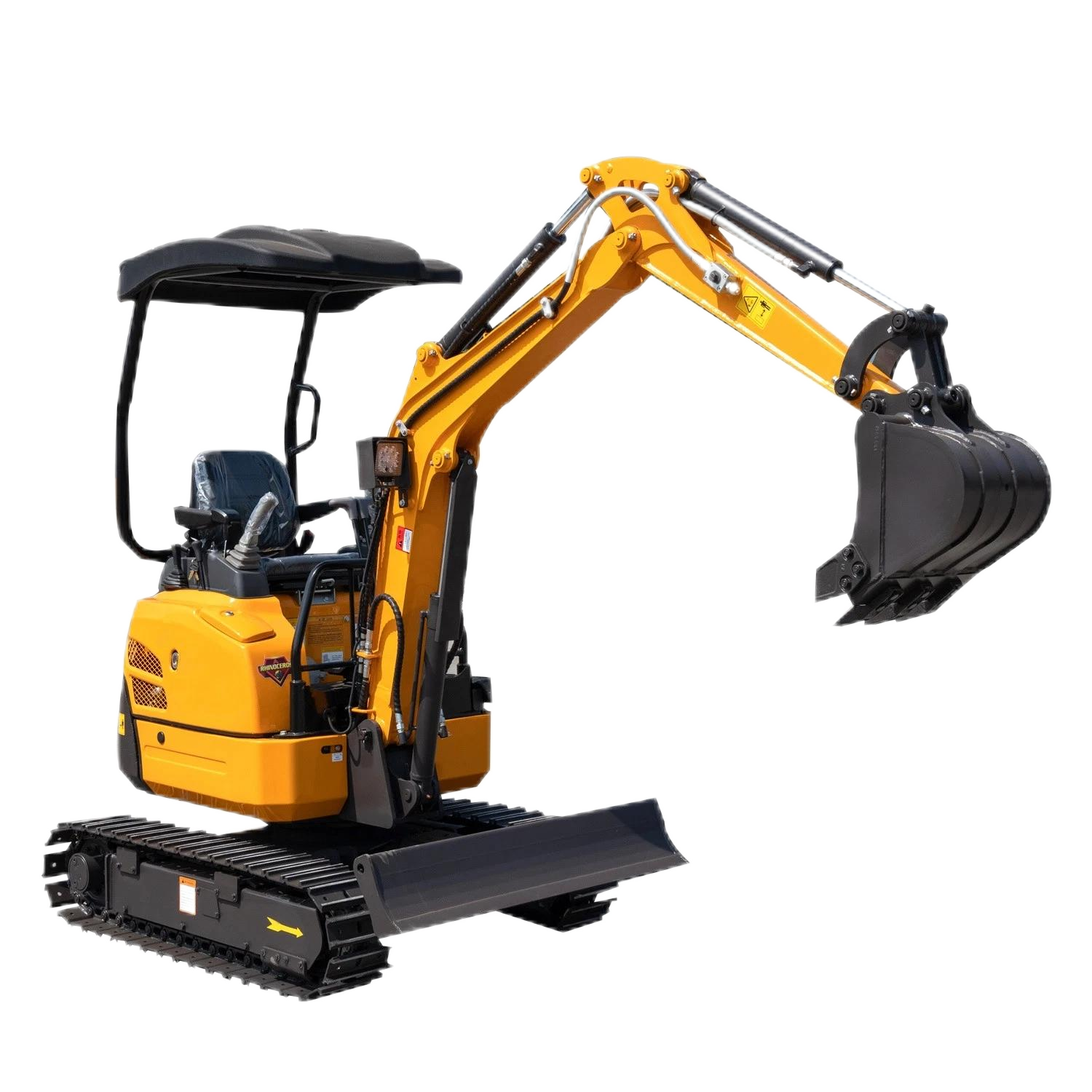Small excavators are mechanical equipment commonly used in various small-scale engineering operations. The following is a detailed introduction about them:

Features
- Compact and flexible: With a compact body and a small turning radius, it can operate in narrow spaces, such as urban streets, indoor demolition sites, rural courtyards, etc. It can flexibly move among various obstacles and adapt to different working environments.
- Easy to operate: The control system is relatively simple and easy to operate and master. For beginners, they can start working after a short period of training.
- Multifunctionality: It can be equipped with a variety of working devices, such as buckets, breaker hammers, grabs, rippers, etc. By changing different attachments, it can complete various operation tasks such as excavation, breaking, grabbing, and loosening soil, meeting the needs of different engineering projects.
- Low noise and low emissions: Some small excavators adopt advanced engine technologies and noise reduction measures, resulting in a relatively low noise level. At the same time, their exhaust emissions also meet environmental protection standards, making them suitable for operating in urban environments with high requirements for noise and environmental protection.
- Low investment cost: Compared with medium and large excavators, small excavators have a lower purchase price, and their maintenance costs are also relatively low. For some small-scale project contractors or individual operators, the investment pressure is relatively small.
Application Scenarios
- Municipal engineering: It is used for urban road maintenance, underground pipeline laying, streetlight foundation construction, urban greening and other projects. For example, when excavating trenches to lay cables or water pipes on narrow streets, small excavators can complete the work without affecting too much traffic.
- Farmland and water conservancy: In rural areas, it can be used for the excavation and renovation of farmland irrigation channels, the excavation of small ponds, and the excavation of rural house foundations. Its compact body can operate flexibly in the fields without causing damage to a large area of farmland.
- Landscape gardening: In places such as parks, gardens, and scenic areas, it is used for tasks such as tree transplantation, flower bed excavation, and landscape shaping. Small excavators can accurately carry out excavation and site preparation operations, helping to create beautiful landscape scenes.
- Indoor demolition: When carrying out demolition and renovation work inside buildings, small excavators can enter the indoor space to demolish structures such as walls and floors. Due to their low noise and small size, they can operate safely in a relatively enclosed indoor environment, reducing the impact on the surrounding environment.
- Small-scale construction: In some small-scale construction sites, such as the construction of rural self-built houses and small commercial buildings, it is used for tasks such as foundation excavation and site leveling. It can operate flexibly according to the size of the construction site and the terrain conditions, improving construction efficiency.





